We arrived in Buenos Aries this morning after an 11 hour flight from Houston. \240
We boarded Celebrity Infinity around 1:00. It’s a much smaller ship than we’re used to, but it’s nice, and will be our home for the next 14 days. There are about 2,000 passenger’s on board.
We’re headed to Antarctica.It’s the longest cruise we’ve ever taken. There are many days at sea, and we have 3 days before our first port of Ushuaia, Argentina.

After 3 days at sea, we have finally reached our first port, Ushuaia, the southern most city in the world. This is the most sea days we’ve done in a row. There were many onboard activities to choose from, but we also found some nice spots around the ship to sit and read and worked out at the fitness center most days. \240We attended some fascinating lectures about Antarctica and some of the wildlife we will hopefully be seeing during the cruise.

Sunrise at 5:00am


We had to take a tender in



Captain Ahab


Our friend , Toni Arenson, from Kansas City just happened to be on a Holland America ship and was docked at the same port! \240We were able to arrange a brief meeting. What are the chances?

Inside Tierra del Fuego National Park
Tom arranged for a tour guide to take us on a tour of the park. It was great having our own guide. We were able to avoid the buses and we got out to walk frequently. The park had beautiful forests, and was surrounded by mountains, lakes, rivers and the Beagle Channel. \240It was in the 60’s and sunny-a heat wave for them! We were very fortunate with the good weather.

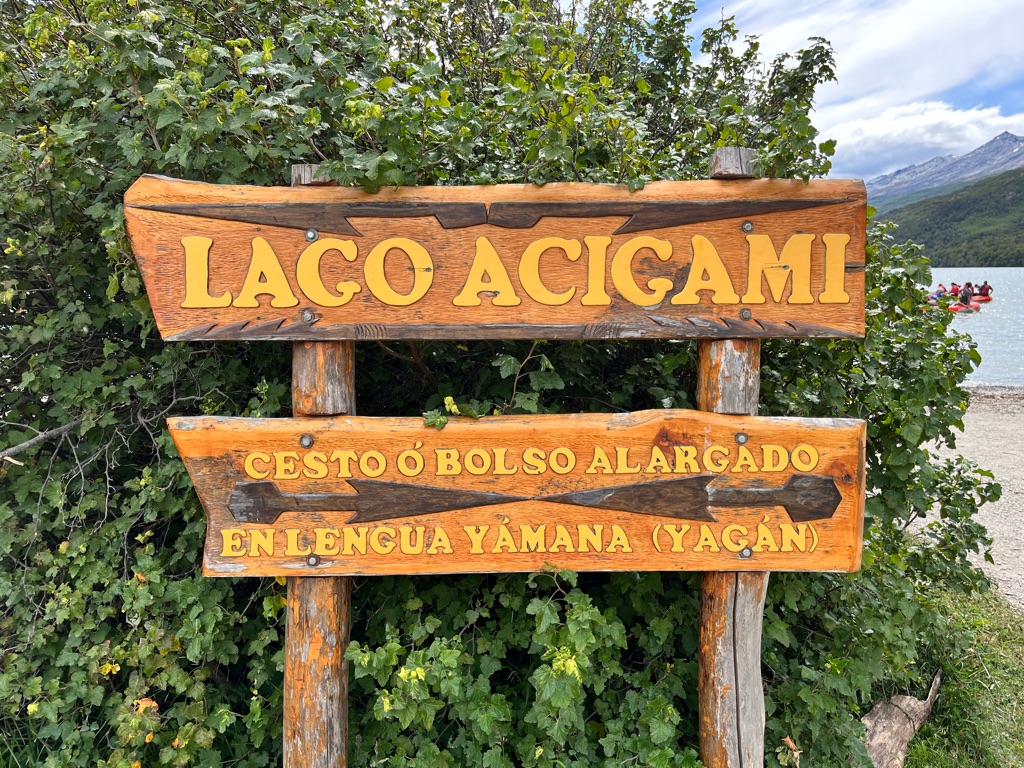


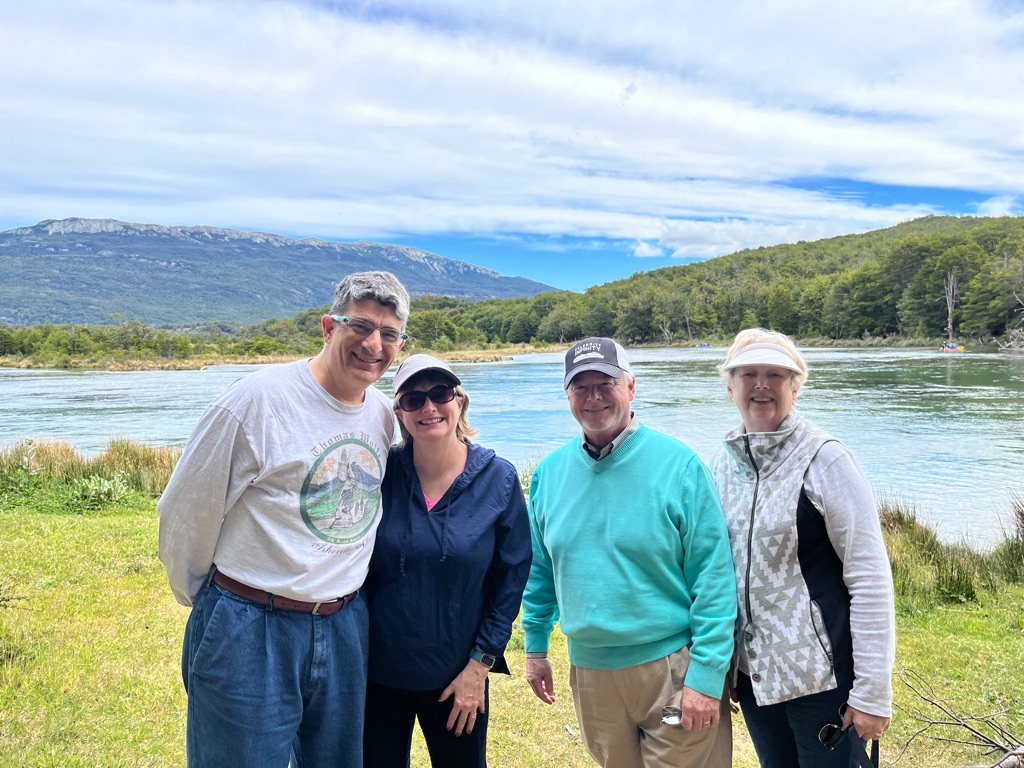
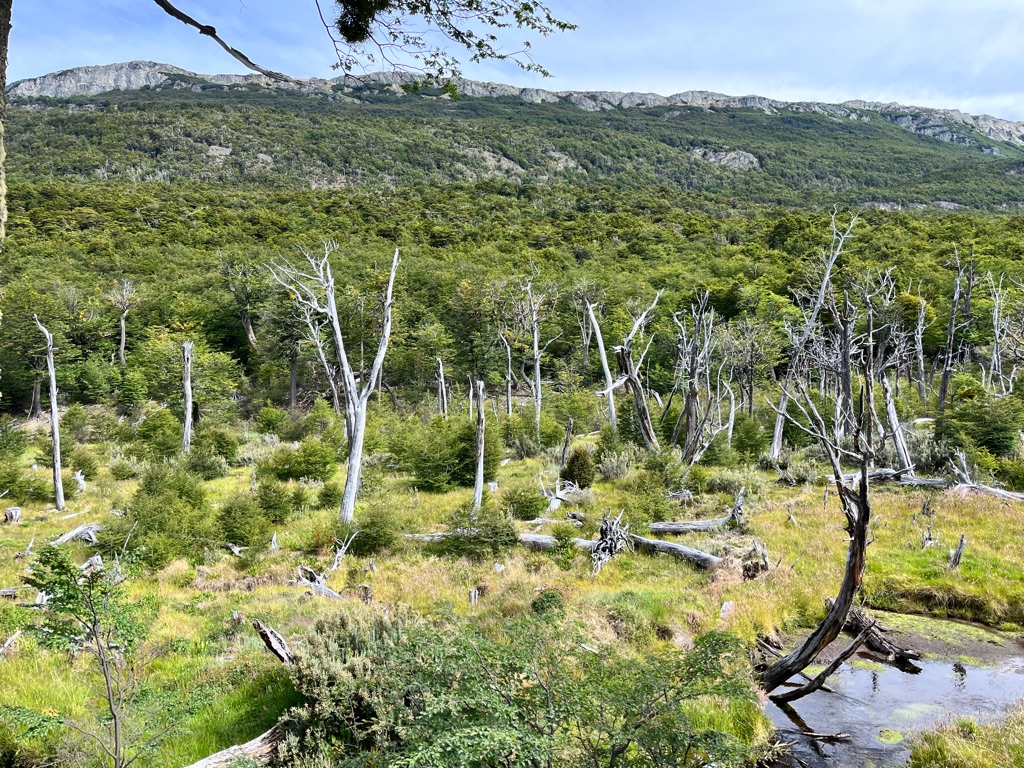
Beavers were brought over in the 1940s for their furs. They have no known predators and the population has gotten out of control. The beavers have killed many trees and affected the rivers by building dams.








Our tour guide, Innes

Beagle channel

The city of Ushuaia

Ships in port


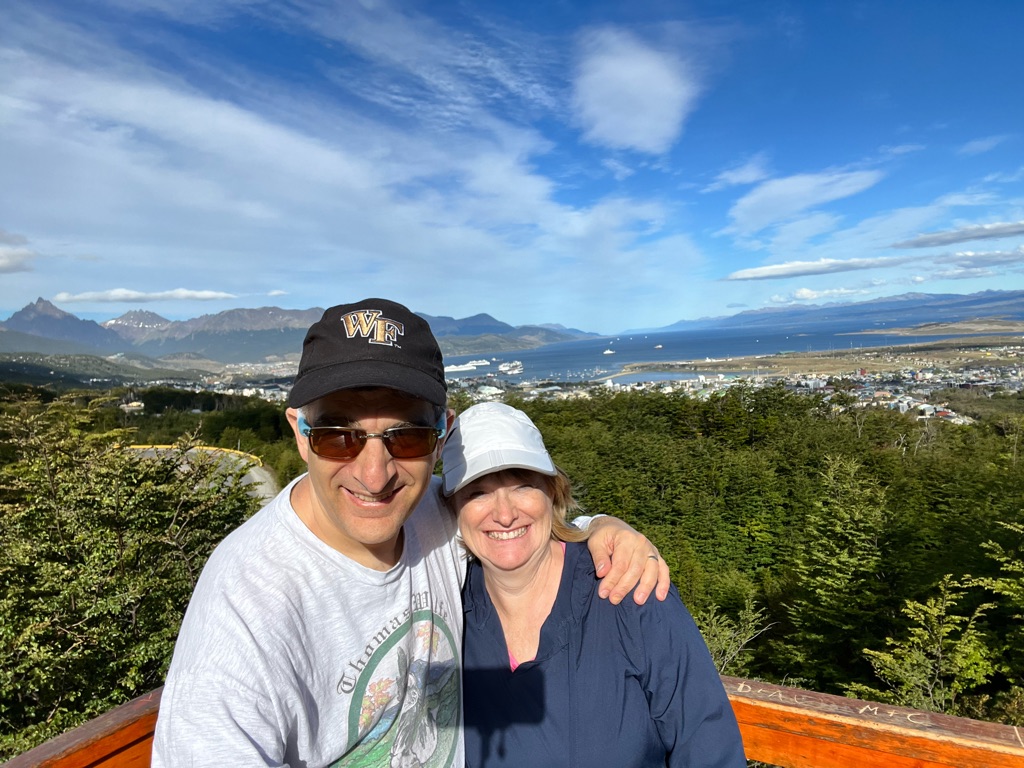

Our ship in the background

Ushuaia

Sunset at 9:30pm



Sunset in Ushuaia
Early this morning we arrived at Cape Horn and began sailing around it.

View from our balcony

View from front of ship

It was a little cold. Probably in the 30s, but the wind made it feel much colder.


On our balcony

We arrived at Cape Horn very early so we had some nice view of the sunrise.




View from our balcony

Rough seas
It was very rough in Drakes passage and the captain was informed by the Chilean government last night that we would have to go about 40 miles back towards Ushuaia to drop off our pilot in calmer waters. That put us about 5 hours behind schedule in getting to Antarctica.

Tom enjoyed following the weather in Drakes Passage. These show the wave heights and surface pressure where we were. It was pretty rough at times, making it difficult to walk around the ship, but we didn’t get sick.

Antartica
Today we continued sailing through Drakes Passage. It’s not as rough as yesterday, but there are still between 5-10ft waves and 10-20 mile an hour winds. It should calm down soon as we begin to enter Schollart Channel.
The cruise director announced that the continent of Antarctica can be seen ahead, so we’re getting close!

First view of Antarctica
We arrived in Schollart Channel and it was beautiful. The sun began breaking through the clouds. We could see mountains and glaciers from our balcony and we also walked out on the ship’s decks. We saw several glaciers floating by that had penguins on them. There were also many humpback whale sightings.

View from our balcony


Views from around the deck












When we arrived in Paradise Bay it began getting foggy and even started snowing. The temperature was probably around 35, but with the wind blowing on deck it felt much colder.

Sitting on our balcony




View from our room

They let people out on the helipad, but then had to close it when it started to snow.




Penguins on the ice

Humpback whales

Sunset was at 10:58, but unfortunately we couldn’t see the sun.
A few facts we’ve learned about Antarctica from the naturalist on board, Celia Garland.
Ice that has broken off of a glacier is considered an iceberg if it is at least 16 ft across and 16 ft high. We only see about 10% of it.
A smaller piece of ice is called a growler.
Brash ice is the very small ice pieces that a ship can sail through.
The ship has an Ice pilot that helps the captain navigate through the ice
Antarctica has many mountains and most have some relation to the other ranges around the world, except the younger ones. The highest mountain is 16,050 ft high.
People can’t go onto Antarctica unless their ship is under 500 people. They have to take small boats ashore and it can be very treacherous. Smaller expedition ships that let you go ashore start at about $17,000 a person!

This is the size of an \240Antarctic explorer ship
Antarctica is the loneliest, highest and driest place in world.
The lowest temperature recorded was -111 in 1982. The highest was 64 in 2020.
There are no permanent settlements on Antarctica.
Captain James Cook tried 4 times to reach Antarctica between 1773-74. He called the conditions Inexpressively horrid
John Davis was the first to set foot on the continent in 1821.
Sunrise was at 3:58am this morning. It is pretty foggy, but there are a few glaciers on either side of us.
We are supposed to arrive at Elephant Island around 6:00 this afternoon and will be there about 3 hours.
Elephant Island gets its name from the elephant seals who live there and because it is shaped like a circus elephant. About 1921, it became a refuge for some sailors from Sir Ernest Shackelford’s expedition after their ship, Endurance, wrecked on the ice. They were rescued after about 3 months.

As we arrived at Elephant Island, the sun came out, the fog began to lift and the clouds gave us some magnificent views! The winds were 30-40 mph out on deck making it very cold and difficult to move around.


















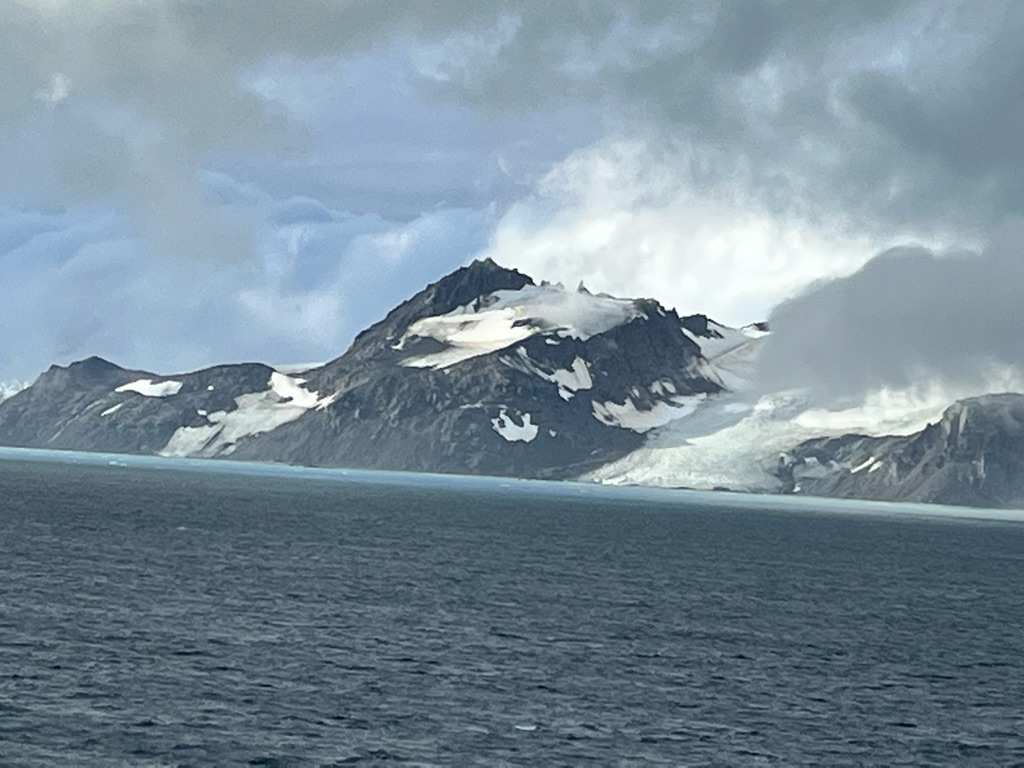

Some people are just crazy!







We were about to blow away!

The sky lounge in the front of the ship

Happy birthday Mark!
Mark likes to go on a cruise for his birthday, and the last several years we have joined him.

Our cabin steward decorated his door

Birthday dinner in Tuscan Grille



After 5 days at sea cruising around Antarctica, we are finally on land again. The Faukland \240Islands have a population of just 3500 people.
We took a 4x4 about 45 miles out to Volunteer point. It was a 2 hour trip and most off the drive was off road.


There are 17 varieties of penguins and at volunteer point there were King penguins, Magellanic Penguins and Gentoo.
Some facts we learned from our naturalist on board:
Penguins are native to Southern Hemisphere
Some fair weather penguins live on warm beaches
Penguins are flightless birds that have solid bones for diving. They can dive up to 700 feet below the surface.
Their feathers are 3 1/2 inches thick and repel water.
In the water a group is called a raft. On land they are called waddles.
Their tongues are like Velcro to help them carry food to the surface to eat. They eat fish, squid and krill.

King penguins
King penguins are one of largest and can reach 3 feet tall. They have orange and yellow markings on their head and neck.



Click for video turn up sound




Mother feeding her chick

Adolescent penguin that hasn’t molted


Adolescent king penguin


Click for video









\240 \240 \240 \240 \240 \240 \240 \240 \240 \240 Magellanic penguins

Magellanic penguins have a white stripe around their stomach, a little pink on the face, and have black bills. They usually build their nests along rocky sandy beaches.




Chicks


Gentoo penguins
Gentoo penguins are medium size. \240They have a white eye patch, black and red bills,and bright orange feet. They are the \240fastest swimmers at up to. 22 mph.




Puerto Madryn, Argentina
Our excursion today took us on a 35mile drive from Puerto Madryn to the Valdes Peninsula, a UNESCO World Heritage site since 1999.

Map of our drive
We first stopped at the visitor’s center which gave information about historical events, the ecosystems of the area, and the regional flora and fauna.

Whale skeleton
We then continued on gravel roads to Caleta Valdes, a 21 mile stretch of protected land. \240Along the drive we saw many guanacos, which are similar to llamas.

\240 \240 \240 \240 \240 \240 \240 \240 \240 \240 \240 \240Guanacos
When we arrived at Caleta Valdes we saw many Magellanic penguins. There are 137 colonies of Magellanic penguins which come back to the same colony and same nest to mate in September-April. \240The females lay 2 eggs which have a 42 day \240incubation period. One penguin stays with the egg and one goes out for food.




Click for video



Click for video


We dove a little further to see some Elephant seals. \240Male elephant seals can hold their breath for longer than almost any other mammal, diving beneath the waves for up to two hours without surfacing for air. Elephant seals live for just two months of the year on land. They spend the rest of their time mostly underwater, hunting squids and fishes. We must have seen them resting during their two months on land!


Elephant seals are quieter than sea lions and use growls and moans to communicate, but do t bark like sea lions.

We drove a little further to a place where there were thousands of sea lions.



Sea lions use barks, growls and groans to help them recognize each other, establish and defend territories, and engage in other social interactions.



Click for video




Today we arrived in Montevideo, Uruguay.

Views of the port.
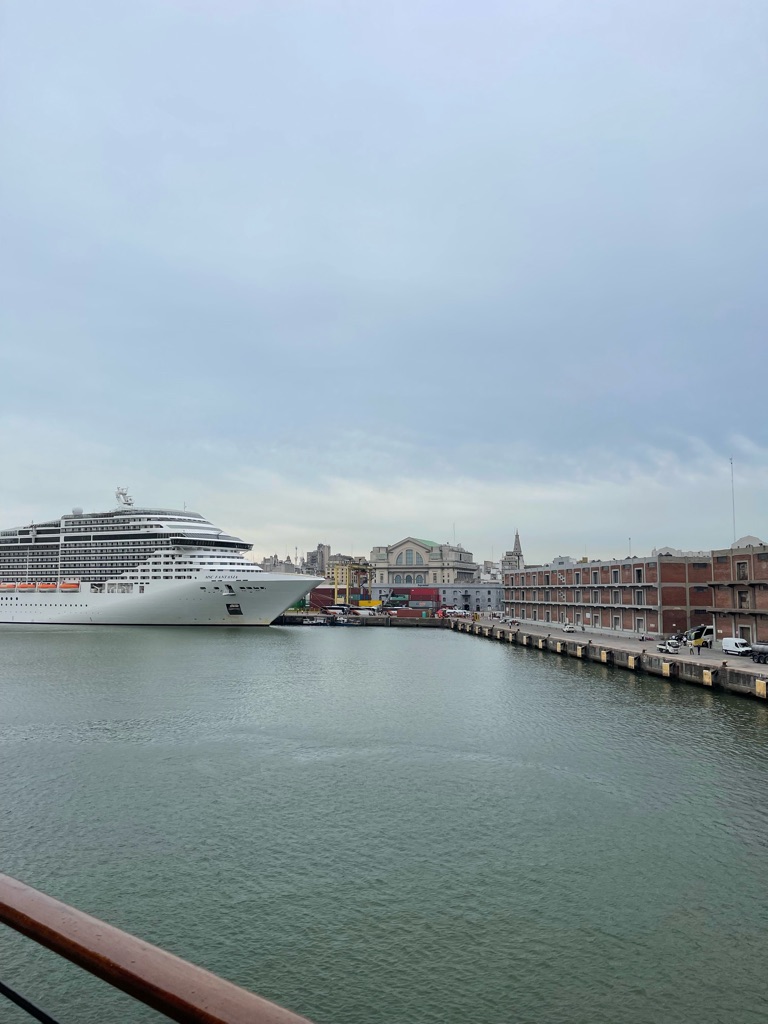

A ship graveyard?


Tom arranged for a tour with a local guide. It was another great excursion with just the 4 of us.

Main square

Entrance into the market. Iron was brought over from Liverpool.

Original source of water

Inside market. Lots of meat cooking.
The average person eats about 101 pounds of meat a year. There are 13 million cows and only 3 million people in Uraguay.



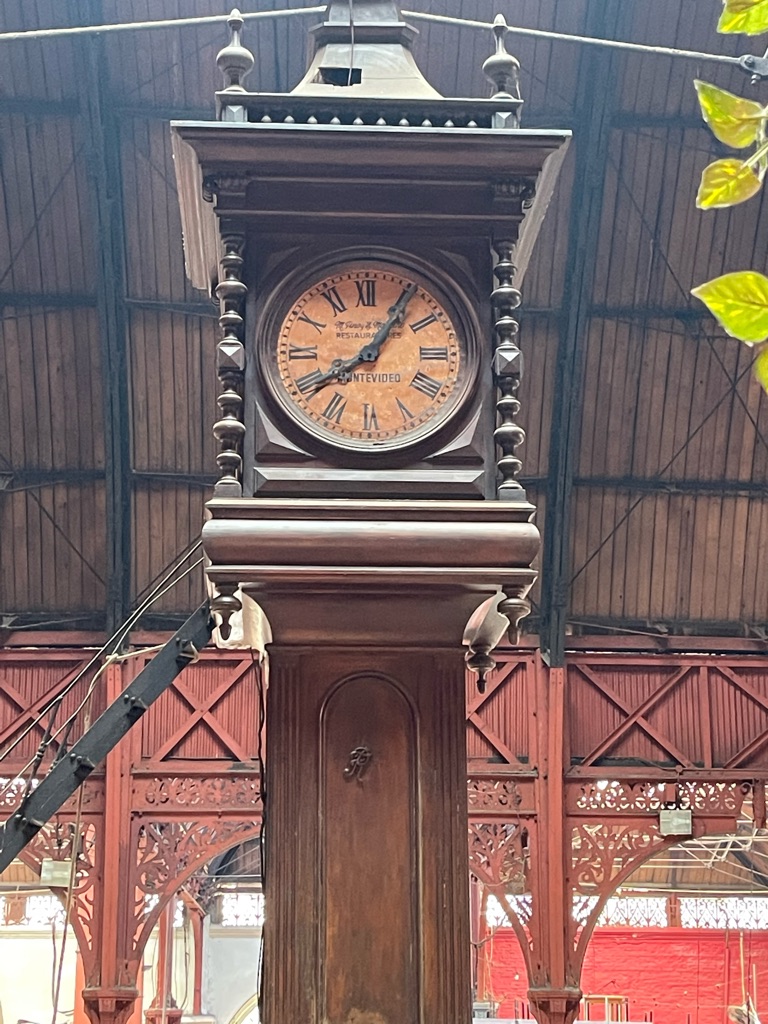
Historic clock

More meat cooking.




Catholic church


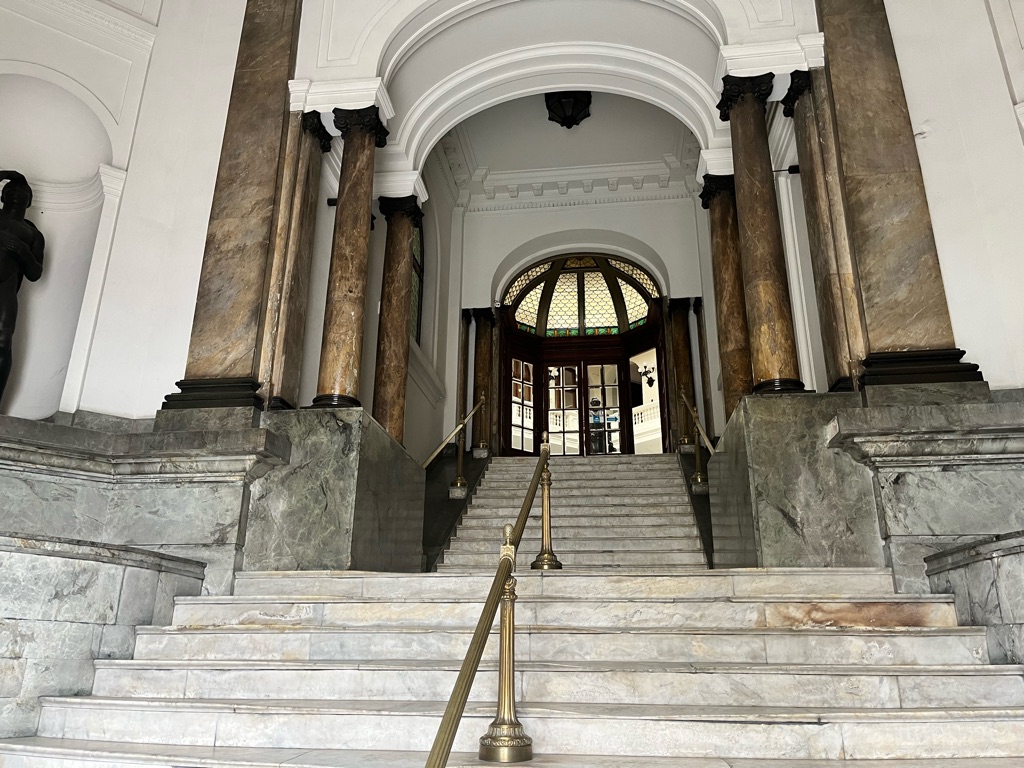
Original post office. Built on 1925. Uraguay didn’t become a country until 1928.

Inside post office

Symbol of Uraguay

View of Montevideo


View of cruise ships in port


Office of the president

Old gate into city

Pedestrian street

Old medical building

Inside medical building now a book store

First FIFA soccer stadium built in 1930. Took 6 months to build. Uraguay played in first FIFA championship there and won.
We went to a family run winery that has been making wine since 1928. The most used grape in Uraguay wines is the tannet grape. It comes from France and was first planted in 1938. There are over 300 wineries in Uraguay.





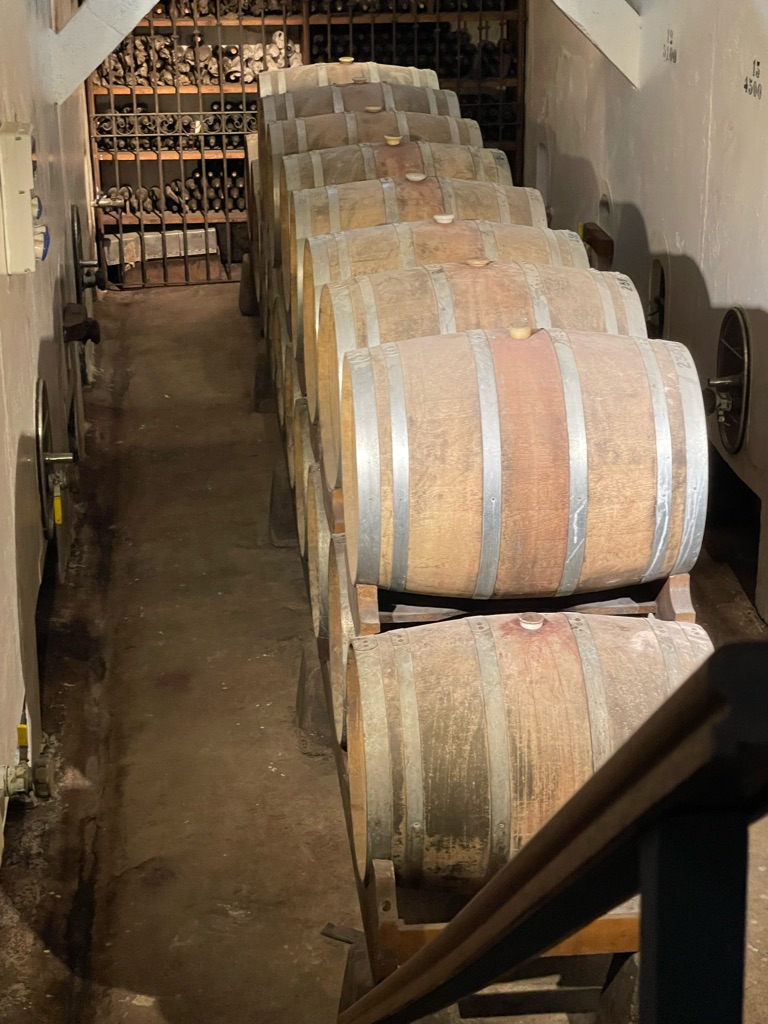
The original wine cellar from 1928


A wonderful wine tasting with Laura who has been making wine there for 33 years.
Buenos Aires, Argentina
All good things must come to an end. This was a trip of a lifetime! \240
After getting off the ship, Tom arranged for a walking tour of Buenos Aires with a local guide. We were staying the night at the Marriott and Susan and Mark had a late flight home. \240






The president’s offices

Balcony Eva Paron spoke from




Catholic church





National courts


Opera house and theater


Inside the market


Cooking food


Lots of meat

Breads


Boca district


Original color of homes





Colorful homes




Soccer stadium

View from our room at the Marriott

Our dinner of steak and lamb





